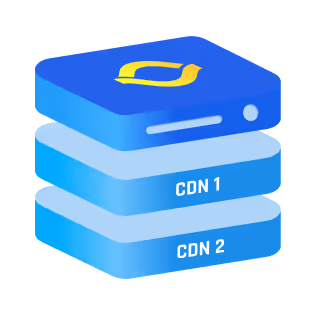Each day, new technologies emerge, reshaping our world. This evolution presents both opportunities and challenges, particularly in cybersecurity. As enterprises shift towards cloud-based infrastructures, the need for security solutions that can adapt to these dynamic environments has never been more important.
In response to this demand, the industry has witnessed a significant shift towards innovative solutions designed to provide comprehensive protection while maintaining the flexibility and scalability that modern businesses require. The one standing at the forefront of this innovation is Cloud WAF.
What is Cloud WAF?
A Cloud Web Application Firewall (Cloud WAF) is an advanced, security-as-a-service offering designed to protect web applications hosted in cloud environments. This sophisticated cybersecurity mechanism is strategically positioned to intercept and analyze web traffic before it reaches the application layer.
The essence of Cloud WAF lies in its ability to discern and neutralize a myriad of cyber threats, including but not limited to SQL injection, cross-site scripting (XSS), and various sophisticated application-layer attacks.
Cloud WAF distinguishes itself from traditional on-premises WAFs through its deployment model. It is inherently cloud-native, leveraging the cloud infrastructure's scalability, flexibility, and distributed nature.
This architectural choice confers upon Cloud WAF a dynamic adaptability, allowing it to scale up or down in response to fluctuating web traffic volumes and evolving security threats.
Hybrid Cloud WAF
A Hybrid Cloud Web Application Firewall (Hybrid Cloud WAF) represents a sophisticated fusion of on-premises and cloud-based firewall capabilities designed to cater to modern IT environments' diverse and complex needs.
This hybrid approach leverages the strengths of both deployment models to provide comprehensive, layered security for web applications.
{{cool-component}}
How Does a Cloud WAF Work?
Together, these stages let a cloud-based WAF deliver adaptable, enterprise-grade protection without the hardware, maintenance, or capacity ceilings of on-prem appliances:
- Traffic Steering via DNS or CNAME
Your domain’s DNS record points to the Cloud WAF’s anycast IP. All HTTP/HTTPS requests now hit the WAF first, not your origin. - TLS Termination at the Edge
The WAF terminates SSL/TLS, decrypting traffic so it can inspect full request payloads while off-loading heavy crypto work from your servers. - Multi-Layer Inspection & Rule Matching
Each request is parsed against signature rules, behavior analytics, and threat-intel feeds. This catches SQL-i, XSS, CSRF, bot traffic, and DDoS patterns in milliseconds. - Decision & Action Pipeline
- Allow legitimate traffic and re-encrypt it to the origin.
- Block or challenge suspicious requests with CAPTCHA, rate-limiting, or 403 responses.
- Virtual Patch newly disclosed CVEs instantly without touching app code.
- Allow legitimate traffic and re-encrypt it to the origin.
- Autoscaling & Global PoPs
Because the platform is cloud-native, inspection engines spin up automatically across multiple points of presence (PoPs), maintaining low latency even under attack. - Logging, Analytics, and SIEM Feeds
Sanitized logs stream to dashboards or SIEM tools, giving real-time visibility into threats, performance metrics, and compliance reporting.
Cloud WAF Benefits
Implementing Cloud Web Application Firewalls (Cloud WAFs) in modern digital ecosystems brings many benefits for the protection and optimal functioning of web applications.
These benefits extend across various dimensions, from enhanced security to operational efficiency, making Cloud WAF an essential component in the cybersecurity strategy of any cloud-reliant organization.
1. Enhanced Security with Advanced Threat Protection
One of the primary benefits of Cloud WAF is its superior capability to safeguard web applications against a wide array of sophisticated cyber threats. This includes protection from SQL injections, cross-site scripting (XSS), DDoS attacks, and other application-layer threats.
Cloud WAFs are equipped with advanced threat intelligence and regularly updated databases, ensuring that they can recognize and neutralize even the newest forms of cyberattacks.
2. Scalability and Flexibility
Cloud WAFs excel in scalability and flexibility, a critical feature given the dynamic nature of web traffic and threat landscapes. They can effortlessly scale up or down based on traffic volume, ensuring consistent performance without the need for manual intervention.
This scalability extends to adaptability as well, allowing Cloud WAFs to accommodate the evolving security needs of growing businesses or fluctuating web activity.
3. Cost-Effectiveness
Cloud WAFs offer a significant reduction in costs associated with web application security. By eliminating the need for physical hardware, organizations save on initial capital expenses as well as ongoing maintenance and operation costs.
The service-based model of Cloud WAFs also allows for predictable budgeting with subscription-based pricing, aligning costs with actual usage and needs.
4. Simplified Management and Deployment
The deployment of Cloud WAFs is remarkably streamlined compared to traditional WAFs. Being cloud-native, these solutions can be deployed rapidly, requiring minimal technical expertise.
The management of security policies and configurations is centralized and often user-friendly, reducing cybersecurity management's complexity and resource demands.
5. Continuous Security Monitoring and Enhanced Application Performance
Cloud WAFs deliver an unparalleled level of continuous monitoring, furnishing organizations with real-time insights into both security incidents and web traffic behavior.
This ongoing surveillance is pivotal not only for the immediate detection and mitigation of cyber threats but also for gaining a deeper understanding of web application performance.
This dual focus on security and performance allows organizations to fine-tune their web applications for optimal functionality while safeguarding them against digital threats.
6. Adherence to Compliance Standards and Robust Data Safeguarding
Cloud WAFs are critical in helping organizations align with various data protection and privacy mandates. Cloud WAFs create a fortified environment for sensitive data through their comprehensive security protocols and data encryption capabilities.
This aspect is particularly crucial for entities navigating the intricate requirements of diverse compliance frameworks, ensuring that they protect their data and adhere to legal and regulatory standards.
7. Forward-Looking Threat Intelligence
Cloud WAFs actively harness the power of global threat intelligence networks. This strategy places them at the vanguard of defense against cyber threats as they continuously evolve to pre-empt potential vulnerabilities and attacks.
By being fed with up-to-the-minute threat data, Cloud WAFs are uniquely positioned to anticipate and neutralize emerging security challenges, ensuring that an organization’s digital defenses remain robust and ahead of potential cyber threats.
{{cool-component}}
Why Use a Cloud WAF Solution?
The adoption of a Cloud Web Application Firewall (Cloud WAF) solution is a decision that aligns with the broader objectives of digital transformation and operational excellence in the cloud:
Here are key reasons why a Cloud WAF is the solution for you:
- Cloud WAFs align with the shift towards cloud-based architectures, which is essential for digital transformation.
- They offer the agility to quickly adjust security protocols in response to changing business and threat landscapes.
- Cloud WAFs integrate effortlessly with cloud ecosystems, enhancing operational efficiency without disruption.
- They ensure consistent security for applications accessed globally, which is necessary for businesses with remote work models and international operations.
- Cloud WAFs encourage innovation and experimentation in new services and applications by securing the development environment.
- Implementing Cloud WAFs builds consumer confidence by demonstrating a commitment to data protection and security.
- Choosing a Cloud WAF represents a long-term investment in evolving and adaptable cybersecurity, keeping pace with future threats and regulations.
Conclusion
In essence, the advantages of Cloud WAFs are manifold. They offer enhanced security with advanced threat protection capabilities, ensuring protection against a spectrum of cyber threats. Their importance is underscored by the evolving nature of cyber threats and the increasing reliance on cloud-based infrastructures.
FAQs
What is a Cloud Web Application Firewall, and how does it work?
A Cloud Web Application Firewall (Cloud WAF) is a cloud-based web application firewall that sits between users and origin servers. All HTTP/HTTPS traffic flows through the service, where it decrypts, inspects, and applies rule sets that block, challenge, or forward requests; delivering up-to-date protection without on-prem hardware.
How does a Cloud WAF differ from traditional on-premises WAFs?
On-prem appliances demand hardware sizing, patching, and upgrades. A WAF in the cloud is offered as a managed, elastic service that auto-scales, lives on anycast IPs, and is vendor-maintained. This removes CapEx, shortens deployment time, and places protection closer to your global audience.
What are the main benefits of using a Cloud WAF for modern web applications?
A cloud based WAF brings immediate signature updates, DDoS scrubbing, and bot mitigation while off-loading SSL and providing rich analytics. It raises uptime, speeds pages, and slashes operational overhead; key advantages for fast-moving DevOps teams and high-traffic web apps.
How does a Cloud WAF scale to handle fluctuating web traffic volumes?
Because it’s a WAF cloud platform built on elastic compute clusters, capacity expands automatically during surges and contracts when demand drops. Additional inspection engines spin up across multiple PoPs, keeping latency low and eliminating the need to over-provision hardware.
How does a Cloud WAF enhance security for web applications?
The web app firewall inspects full TLS payloads, correlates global threat intel, and deploys virtual patches within minutes of zero-day disclosure. It blocks OWASP Top-10 exploits, throttles malicious bots, enforces geo/IP policies, and masks origin IPs behind hardened edge networks.
How does Cloud WAF support compliance with data protection and privacy regulations?
A cloud-based WAF centralizes logging, masks sensitive fields, and enforces encryption. Pre-built rule sets map to PCI-DSS, HIPAA, GDPR, and other frameworks, while audit-ready reports feed directly into GRC platforms; ensuring your security controls evolve with new legal and industry mandates.



.png)
.png)
.png)






